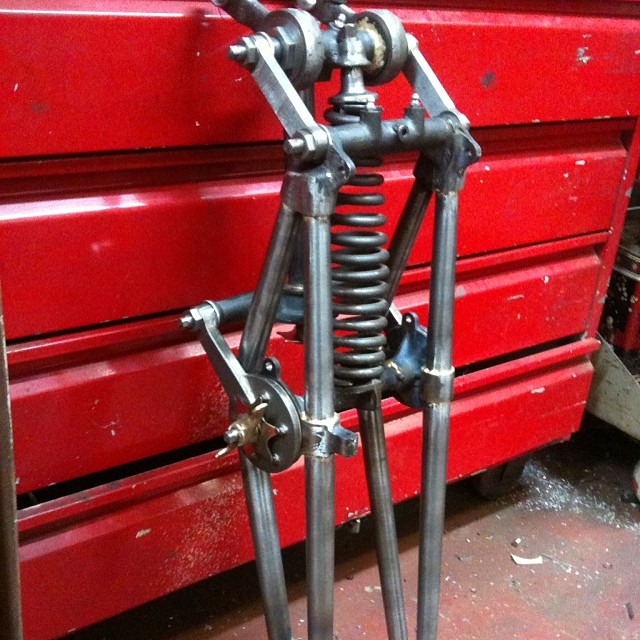

It is rare to see a chopper with a radiator. Choppers have been created using almost every available engine, but builders have always shown a preference for older air cooled designs. The Honda 750-4 was the most widely used Japanese motor for chopper builders early on. As the Japanese manufacturers began offering larger engines in the late 1960s these motors were also quickly put to use by chopper builders.

British bikes, particularly Triumphs, were also a popular motor for choppers early on. As new engines became available they were soon utilized in choppers. The earliest choppers tended to be based on Harley-Davidson motorcycles, at first making use of the Flathead, Knucklehead and Panhead engines-many of which could be found in surplus military and police motorcycles bought cheaply at auction. These early modified motorcycles were known as "bobbers", and there are many common features between bobbers and choppers, with choppers differentiated being more radically modified, and especially by having the frame tubes and geometry modified ("chopped" by welding) to make the bike longer. The first choppers were built in America, and were an outgrowth of the milder customization trend that had originated after WW2 when returning soldiers and others began modifying cars and motorcycles, frequently to improve performance in top-speed races on dry lake beds in Southern California and similar desolate spaces such as unused airstrips in other parts of the country, or on the street for street racing.

Motorcycles and automobiles ran at the same meets, and bobbers were an important part of the hotrod culture that developed in this era. In California dry lake beds were used for long top speed runs. These machines were lightened to improve performance for dirt-track racing and mud racing. The large, spring-suspended saddles were also removed in order to sit as low as possible on the motorcycle's frame. In the post–World War II United States, servicemen returning home from the war started removing all parts deemed too big, heavy, ugly, or not essential to the basic function of the motorcycle, such as fenders, turn indicators, and even front brakes. The large and well-appointed bikes exemplified the "dresser" motorcycle aesthetic and providing a counterpoint to the minimalist bobber, and café racers.
#HOW TO BUILD GIRDER FORKS CHOPPER BUILDERS HANDBOOK SERIES#
Indian Scouts and Chiefs of the time came with extravagantly large, heavily valanced fenders, nearly reaching the center of the wheel on the luxurious 1941 Indian Series 441 while racing bikes had tiny fenders or none at all. The heavily valanced fenders of the 1940 Indian 440 four.Īn early example of a bobber is the 1940 Indian Sport Scout "Bob-Job" which toured in the 1998 The Art of the Motorcycle exhibition.


 0 kommentar(er)
0 kommentar(er)
